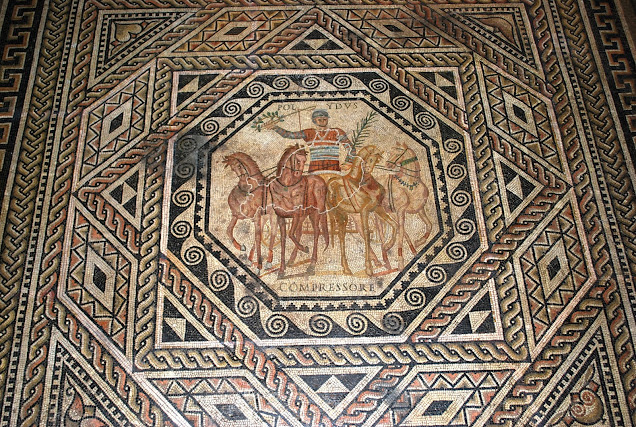Next stop: Mainz Romisches Theater
Last week, I visited Mainz or Mogontiacum in Germany. We took the train from Mainz Hbf to Wiesbaden and got out at railway station 'Mainz Romisches Theater'. It is incredible to learn that the train is almost running throught the scanea frons.
Ever since 1884, when this railway line was built, it has been known that remains of Roman buildings were at this site. But exactly what it was, and how big, was unclear. Only in 1914, when railway works were carried out, it was recognized that the remains belonged to the theater of Mogontiacum. It was the first time, since the 11th century, when the historian Gozwin wrote: "Hoc etiam astruunt adhuc superstites theatri ruinae, quod Romano more ad ludos circenses et theatrica spectacula constructum est", that the building was recordably identified as the theater in modern times. During the First World War however, it was covered by soil and forgotten again. It was rediscovered in 1998 and subject to systematic excavation.
The building measured 166 meters, the width of the semicircle was 116 meters and the stage had a with of 42 meters. About 10,000 people could watch the performances. It makes the theater of Mainz the largest one above the Alpes.
Jan Martin Klessing, the architect responsible for the conceptualization, planning of conservation and execution of the theater of Mainz after 1998 presented some illustrative visuals. Furthermore, the history of Roman Mogontiacum is well documented by the Ancient Warfare Magazine. You can find more information here!
Nevertheless, more of my pictures of the theater, which were for real, you can find here! Coordinates: ( 49° 59' 35" N, 8° 16' 40" E ); ( 49,9931°, 8,2778° ).
Ever since 1884, when this railway line was built, it has been known that remains of Roman buildings were at this site. But exactly what it was, and how big, was unclear. Only in 1914, when railway works were carried out, it was recognized that the remains belonged to the theater of Mogontiacum. It was the first time, since the 11th century, when the historian Gozwin wrote: "Hoc etiam astruunt adhuc superstites theatri ruinae, quod Romano more ad ludos circenses et theatrica spectacula constructum est", that the building was recordably identified as the theater in modern times. During the First World War however, it was covered by soil and forgotten again. It was rediscovered in 1998 and subject to systematic excavation.
The building measured 166 meters, the width of the semicircle was 116 meters and the stage had a with of 42 meters. About 10,000 people could watch the performances. It makes the theater of Mainz the largest one above the Alpes.
Source: http://nl.worldpoi.info/poi/2848/ The theater, build in the first century AD, is one of Mainz' oldest buildings, although, unfortunately, nothing is known about its first building phase. What is certain, is that it was renovated during the reign of Domitian (81-96 AD), who visited the city, and this phase is what we see today. Probably, the theater was not only used for plays, but also for political meetings.
Jan Martin Klessing, the architect responsible for the conceptualization, planning of conservation and execution of the theater of Mainz after 1998 presented some illustrative visuals. Furthermore, the history of Roman Mogontiacum is well documented by the Ancient Warfare Magazine. You can find more information here!
Unfortunately, one of the most impressive collections of Roman tombstones and other monuments found at Mainz (Steindenkmaler) and North of the Alpes, were in depot during our visit. Normally these are at display at the Landesmuseum Mainz. But most disappointing was our visit to the Römisch-Germanisches Zentralmuseum and Forschungsinstitut für Archäologie. Almost all the exhibits are copies made during antiquities studies at the Institute.
Nevertheless, more of my pictures of the theater, which were for real, you can find here! Coordinates: ( 49° 59' 35" N, 8° 16' 40" E ); ( 49,9931°, 8,2778° ).





Reacties
Een reactie posten